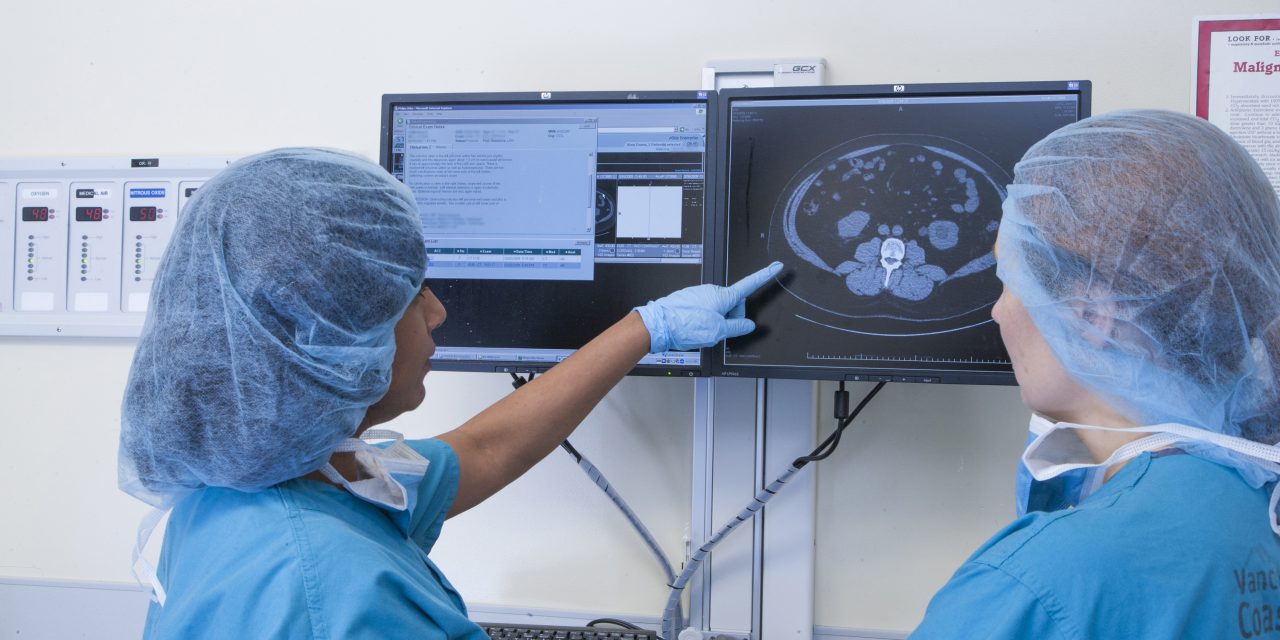
MRI Basics

The physics of MRI image generation is a fairly complex subject. Nevertheless, it is useful to have a rough knowledge of how an image is generated, if for no other reason than to be able to confidently explain it to our patients if they happen to raise the issue. Even so, they may not be able to understand it, but if we are confident in our explanation, the patient will be confident in us as well.
In this column, I will attempt to explain some of the rudiments of how an MRI image is produced by concentrating on actual image production and a brief discussion of several of the common imaging sequences. In the next months’ column, I will review the normal appearance of given tissues with different pulse sequences on MRI.
Energy Involved
There are two basic types of energy involved in MRI image production, electromagnetism and radio frequency waves (1). It is the interaction of these two forces that allow image generation. The particle within the human body that is most influential in creating an image however is the free hydrogen proton. All hydrogen protons spin around an axis of rotation. Under normal circumstances, these axes of rotation are oriented in an infinite number of directions. However, when the body is placed within a strong magnetic field, these axes of rotation become aligned parallel to each, all pointing in the same direction.
When a radiofrequency pulse is applied to a given slice of tissue, the magnetic field becomes disrupted within the confined area targeted by that pulse. This, in effect, negates the force of the magnetic field and allows the hydrogen protons axes of rotation to become misaligned. When the radiofrequency pulse is then shut off, the magnetic field exerts its effect and the axes are again pulled into alignment. In the process of realigning, the hydrogen protons will resonate and when this resonance reaches the Larmor frequency, a radio frequency signal is produced by that part of the tissue. This signal is picked up by the body coil that surrounds the part being imaged and transmits it to the computer. The computer reads these signals as they are emitted by various parts of the tissue slice and assembles them into an image.
The Coil
For each body part that is imaged, a body part coil is required. The coil surrounds the body part and acts as both a radiofrequency transmitter and receiver. Coils are specifically designed for each anatomical area that is being imaged. This is an important consideration, particularly when imaging small body parts such as a wrist. Without a specific wrist coil, for instance, it is extremely difficult to obtain optimal image quality.
As mentioned earlier, the atomic particle within the body that is responsible for image generation is the hydrogen proton. Protons are required to generate a signal on the image. The signal is the degree of brightness of a particular tissue on the image produced on the monitor. If a given tissue has a low concentration of free hydrogen protons, then there will little to generate a signal. This is why tissues such as cortical bone or air, which contain relatively few free hydrogen protons, appear black or low signal intensity on all imaging sequences.
The most common type of MR imaging sequence is the spin echo sequence. These may consist of T1, T2 or proton density pulse sequences (2). Manipulating the length and frequency of application of the radio pulse is the method by which these different sequences are produced. Two terms which you may have heard in regard to these sequences is echo time and rest time denoted as TE and TR on the sequence identification codes. By knowing the relative values of these factors we can tell whether the sequence we are viewing is water weighted (T2) or fat weighted (T1). In the next issue, I will explain in more detail the difference between the common pulse sequences used in MRI and their appearance in various tissue types within the body.
Conclusion
The complete physics behind image generation in MR is, of course, more complicated and involved than the description that I have given above, however, the basic explanation that I have provided is accurate and maybe one that you can share to some degree with your patients.
References
- “Understanding MRI” Newhouse J.H., Wiener J.I., Little Brown co. 1991
- “Musculoskeletal MRI” Kaplan P.A., Helms C.A. et al., W.B. Saunders Co. 2001

















